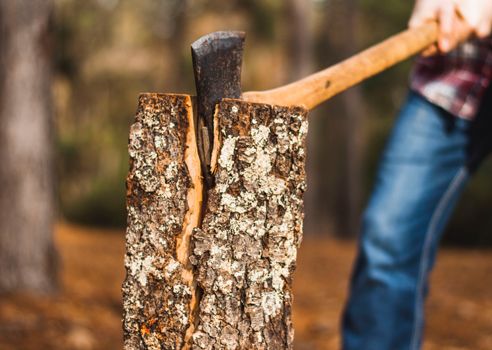Reading time: Less than 1 minute
Increase your vocabulary and you’ll make your writing much more precise. That’s why I provide a word of the week. Today’s word: hew….
I learned the verb “to hew” when I was in grade school — as a result of the country I was born into. In my early childhood, Canadians were often described as, “hewers of wood and drawers of water,” a dramatic phrasing that appealed to my young ears.
The word hew means to cut wood with blows of an axe or other heavy cutting instrument.
Originally, the expression was a biblical term (Joshua 9:21) but it also refers to my country’s reliance on natural resources such as lumber, mining, oil and fisheries. The phrase was first used in a political context in 1879 by then-Minister of Finance Leonard Tilley. He said, “The time has arrived when we are to decide whether we will be simply hewers of wood and drawers of water…or will rise to the position, which, I believe Providence has destined us to occupy.”
I encountered the word hew again, when reading the novel The Water Cure by Sophie Mackintosh. Here is how Mackintosh used it:
Our world is made up of hum air over rough sea, riptides theoretical and deadly, birds that hew and blue sky with their ominous bodies.
Interestingly, Mackintosh used the word metaphorically, referring to the way in which the sharp wings of the birds appear to “cut” the sky. Hew can also be used metaphorically, in the sense of conforming or adhering to something. For example, one might say that a particular group is trying to hew to the line. How does this relate to cutting or logging? The “hew line” is a line marked along the length of a log showing where to chop in order to shape a beam. “Hewing to the line,” is cutting along the mark-adhering to it-until the side of the log is squared.
The origin of the word is Old English heawan meaning “to chop, hack, gash, strike with a cutting weapon or tool.”
An earlier version of this post first appeared on my blog on June 5/19.


